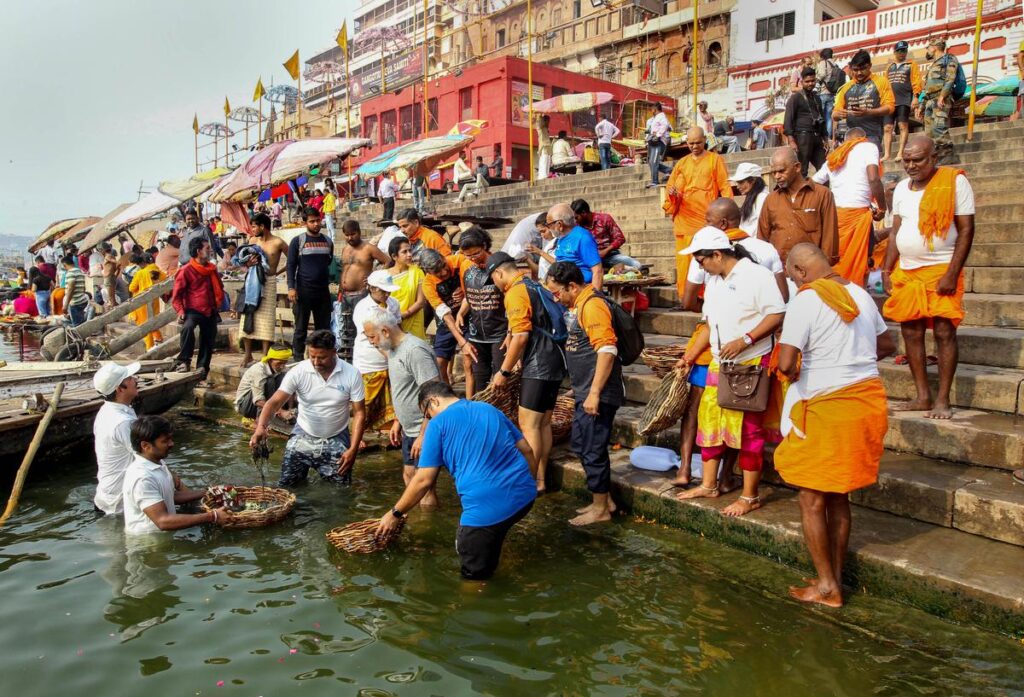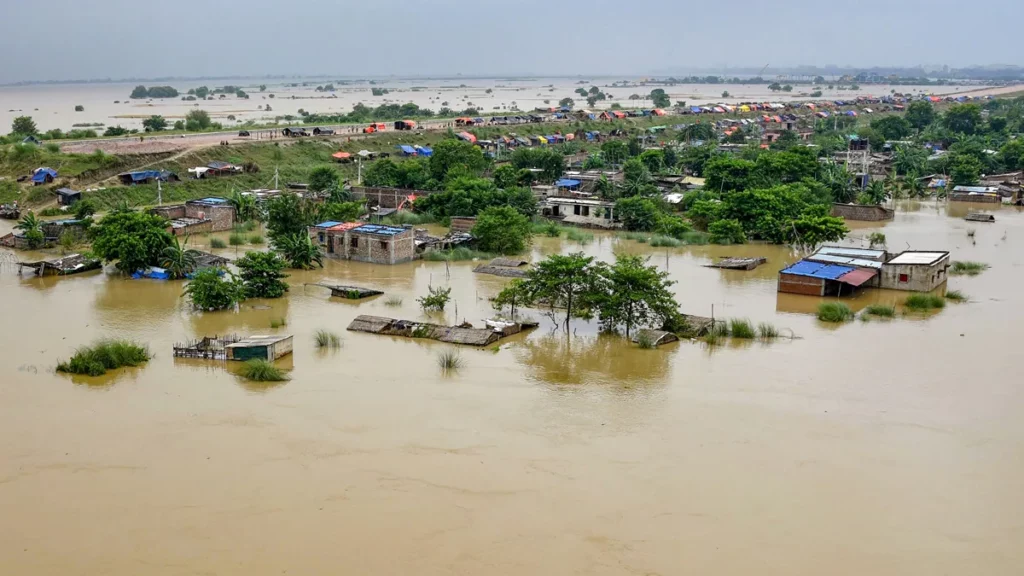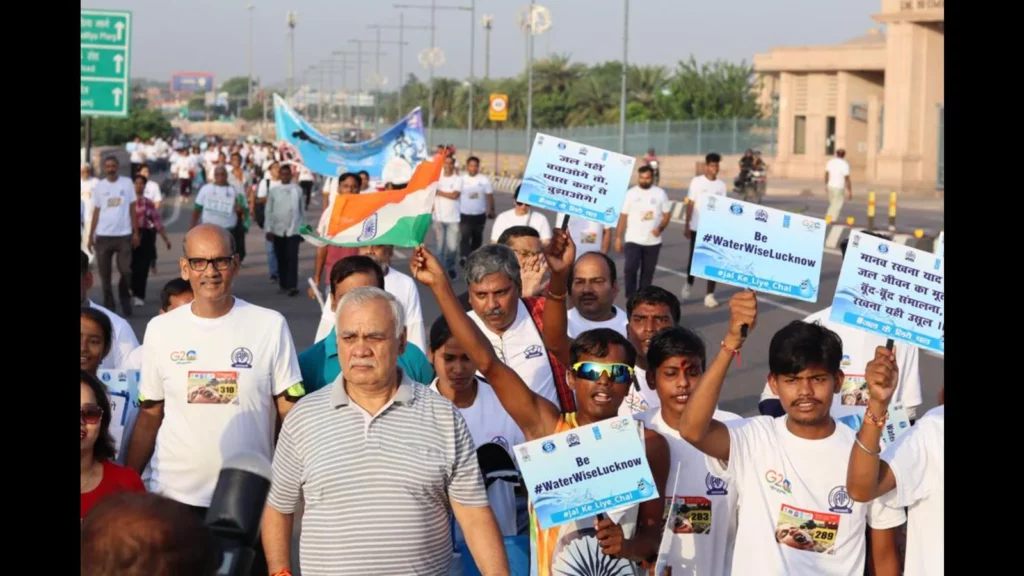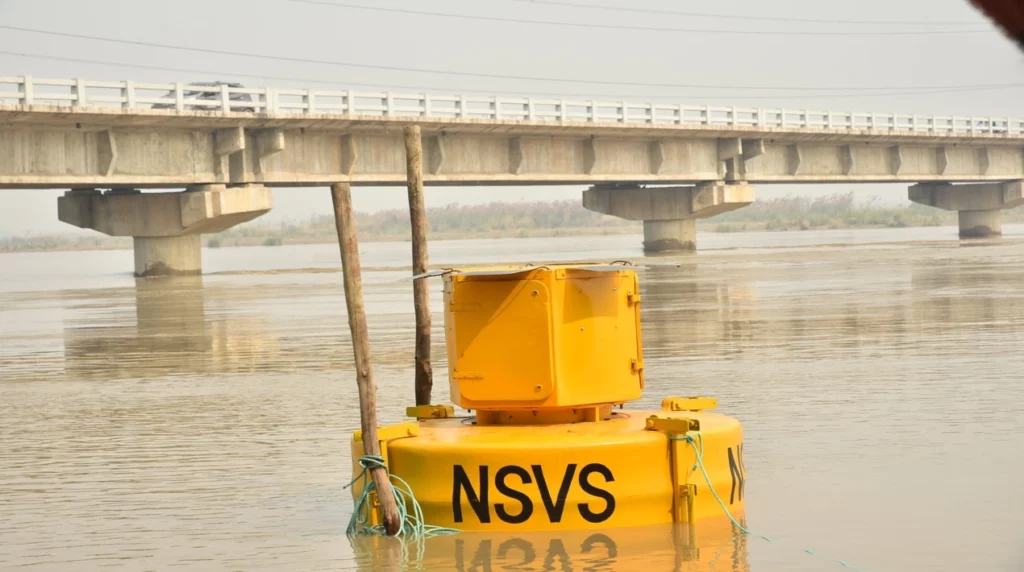Restoring the Ganga River Through Sustainable Strategies and Community Initiatives
Mr. Mithilesh Kumar Mishra, Unit Head (Knowledge and Planning), State Mission for Clean Ganga-Uttar Pradesh, examines the efforts and challenges involved in rejuvenating the Ganga River
Could you provide an overview of the approach taken by the National Mission for Clean Ganga (NMCG) and the State Mission for Clean Ganga (SMCG) towards rejuvenating and restoring the Ganga River and its ecosystem?
The NMCG/SMCG’s approach, as governed by the principles outlined in the Ganga Authority Notification dated 07 October 2016, entails managing the Ganga River as a single entity and considering its chemical, physical, and biological characteristics in an ecological, sustainable manner. We focus on maintaining the continuity of the river’s flow by ensuring its connectivity in longitudinal, lateral, and vertical dimensions to restore the relationship between surface and sub-surface flow. We look to the catchment area being revegetated and the aquatic and riparian biodiversity regenerated and conserved. We are also vying to ensure that the flood plains are made construction-free zones. The floodplain zonation of the River Ganga is ongoing and being revisited to complete the zonation for one-in-100-year floods, in compliance with the National Green Tribunal’s order.

The entire Namami Gange Program is designed to encourage people’s participation as an integral part of the process. Enforcement of regulations, standards, and effluent limitation plans is also integral to the program. To cover all these areas, the Namami Gange Program has been divided into five intervention categories.
- Aviral Ganga – measures to ensure continuity of the flow
- Nirmal Ganga – measures to ensure a pollution-free river
- Jan Ganga – measures to ensure people’s participation in rejuvenating and maintaining the river Ganga in a pious state
- Gyan Ganga – measures to apply worldwide experience and knowledge of river rejuvenation and promote further research to find new solutions
- Arth Ganga – measures to reinforce connectivity between people and rivers, especially to enhance their livelihood and harvest the economic potential of rivers
The project initially began with the construction of ghats and riverfront development works to improve people’s connectivity with the Ganga and protect its sociocultural and religious importance.
Afterwards, Interception and Diversions, and sewage treatment plant-related projects were deployed to decrease river pollution by providing environmental service infrastructure to treat sewage generated by various habitations along the Ganga and its tributaries.
Now the focus must shift towards rejuvenating small rivers and taking punitive measures against defaulters. All urban local bodies should have their own river management program, all development work should be river-centric, and sustainable urban designs must be adopted at every level. The nature-based solutions for decentralized sewage treatment must also be deployed.
Could you outline the observable climatic shifts within the Ganga Basin and what proactive measures are being undertaken to mitigate their effects?
Some of the noticeable shifts due to climate change include frequent, unprecedented floods in and during non-traditional flooding regions and months, depletion of groundwater (GW) level, reduced river flow, dying of wetlands, rising temperatures, failing crops, loss of vegetation cover, a threat to biodiversity (especially riverine diversity), loss of livelihood, increasing incidents of forest fire, frequent power cuts, erratic power supply, irregular rainfall, low crop yield due to poor monsoons, and failing orchards to name a few.

To mitigate these, the proactive measures taken by the water sector in Uttar Pradesh are outlined in the following five areas.
A. Enhanced monitoring and research to establish water budgets and manage water at micro-watersheds
The state of Uttar Pradesh has planned to study the impacts of climate change on water resources over every 10×10 kilometer stretch. There are also plans to set up hydro-met monitoring stations to capture the high spatial variability in rainfall observed across Uttar Pradesh. These stations will be equipped with soil moisture sensors, automatic water quality sensors, and water quality analyzers.
Given the alarming rate of GW depletion in a few development blocks, the state has also planned to increase the density of piezometer and observation wells, which will help measure GW levels in each micro-watershed.
Additionally, establishing water budget estimation works will help create a baseline for future climate projections reflective of the development needs of the entire state. Gram Panchayats (GP), urban communities, and stakeholders will be involved in developing their local water budgets by taking the assumption of judicious use across various sectors.
B. Strengthening water sector infrastructure to adapt to climate change
Uttar Pradesh is developing guidelines for building climate-resilient large dams, barrages, canals, and check dams and for retrofitting existing ones to accommodate extreme rainfall as per future projections. A system will be placed to bring ‘correction of system deficiencies’ for equity of canal water by restoring the canal/drain section for the present availability of rainwater, surface water, and GW, specifically studying existing cropped areas, cropping intensity, and future possible trends. The retrofitting requirement of check dams constructed as per the future rainfall projections will also be mapped to make them climate resilient.
The State also plans to develop courses on guidelines to study the impacts of climate change on water resources. All engineers in the public and private sectors involved will be encouraged to take the courses and get certified.
C. Enhanced water use efficiency across sectors to reduce surface water and GW dependency
Uttar Pradesh has planned the study of water use in water-intensive industries in the state. These include thermal power plants, textile, leather industries, paper and pulp, sugar and ethanol industries, hotels, beverage, dairy, and steel mills. Based on the study, best practices in improving water use efficiency will be cataloged to optimize productivity by industry type.
The limit to GW extraction will be fixed based on benchmarking the best practices in water-intensive industries. A system of monitoring water use through smart water meters to enforce regulation will be deployed, covering all basins with policy development and implementation.
The state is also developing a policy for wastewater reuse in water-intensive industries and promoting micro irrigation practices (such as sprinkler and drip irrigation) in agriculture in all basins, with drought-prone districts prioritized.
The state will also integrate rooftop rainwater harvesting in existing and planned institutional (government/semi-government) and commercial buildings in rural and urban areas with plot sizes greater than 300 square meters with permission for building plans and completion certificates.
In addition, the state plans to universalize water meters at the household level – both rural and urban – with differentiated pricing mechanisms fixed by a regulator and integrated.
Reuse and recycling of wastewater in residential societies – all residential societies generating wastewater greater than 0.5 megaliters/day with permission for building plans and completion certificates. An intense Information, Education, and Communication (IEC) program for efficient water usage for domestic use will also be designed and implemented through school education and women’s self-help groups to target households that have 24/7 water access in rural and urban areas.

D. Enhanced efforts towards GW recharge
The state will develop and implement GW recharge plans in industrial clusters. All industrial clusters located in overexploited and critical blocks will be covered by priority.
The state is developing action plans for limiting GW extraction for irrigation and domestic use in 35 districts reporting salinity, nitrate pollution, heavy metals, and bacterial development, on priority.
The state has planned to assess potential sites for GW recharge by flood water in overexploited and critical GW areas of Uttar Pradesh (inter-river and canal transfers) such as the eastern districts of Deoria, Mau, Ballia, Ghazipur, Jaunpur, and Varanasi. It will also design and implement a GW recharge mechanism appropriate for all existing and upcoming GW-based water supply systems (existing and under pipeline) in both rural and urban areas. The overexploited and critical blocks will be prioritized.
Holistic wetland recharge measures have also been planned across the state. The major basins like Ganga, Yamuna, and Rapti will be prioritized first and then all basins will be covered.
Wetland User Association Bodies will be formed at the local level for management and governance (community ponds and lakes) in all basins.
E. Readiness for frequent and unprecedented floods in non-traditional flooding regions and during flood-prone months
The state will initiate coordination between India and its neighboring countries to access rainfall and flash flood data on a real-time basis for all the rivers and tributaries that flow into the state of Uttar Pradesh.
The state plans to develop a system of hydro-meteorological observation and transmission of real-time data through automatic sensors and satellite-based transmission between the transboundary river basins (like Gandak, Ghagra, and Rapti) between India and Nepal to make appropriate decisions for downstream regions to mitigate unprecedented floods.
What are the various stakeholders involved? How does the NMCG engage with local communities to meet its goals?
A vast range of stakeholders are involved in the Namami Ganga Program, which includes populations of the States through which the river flows and neighboring countries that depend on the river, all line departments of the government (both state and union), international agencies including funding agencies, community-based organizations, Non-governmental organizations (NGOs), international NGOs, research institutes, universities, activists, the Hon’ble National Green Tribunal and Hon’ble judiciary, State Ganga Committee, District Ganga Committee (DGC), National Ganga Council, friendly countries, and all countries in the periphery of the Himalayas, and industries.
NMCG/SMCG interacts with all of the above from time to time, takes their views, and engages with them in the execution of various sub-projects and programs to achieve its objectives.
DGC has been constituted for every district of Uttar Pradesh. DGC is organizing various activities directly, or through NGOs, for the rejuvenation of the River Ganga.
What are the primary challenges currently facing NMCG and SMCG as they work to maintain the ecological flow of the Ganga River?
- A large number of stakeholders
- Delay in execution of many sub-projects
- Connecting with rural areas in a more intense manner
- Differential approaches of many stakeholders
- Differential priorities of different states and line departments
- Sectoral stress vis-à-vis water allocations
- Rising water usage and GW extraction
- Extreme rainfall and deficit events
- Grossly polluting industries
- Emerging pollutants
- Reuse and recycling of treated wastewater
- Long environmental flow establishment process and notifications
Could you share forthcoming initiatives aimed at ensuring water quality and promoting environmentally sustainable development within the Ganga basin?
Water quality monitoring is an important part of the process, which allows us to take immediate action when any discrepancies are noted.
The Uttar Pradesh Pollution Control Board (UPPCB) is regularly monitoring the Water Quality of the River Ganga at 43 locations in the State of Uttar Pradesh.
Real-time, continuous water quality monitoring stations have been installed across the river, and its tributaries and 1294 online continuous effluent monitoring systems are installed by the grossly water polluting units. UPPCB has also dedicated a centralized control room, or vigil, and frequent monitoring of Grossly Polluting Industrial units. Further, UPPCB and Third Party/Independent agencies (assigned by CPCB) conduct regular inspections of GPI units. UPPCB has also proposed the installation of 14 real-time, continuous water quality monitoring stations on different tributaries of the River Ganga.

Promoting environmentally sustainable development within the Ganga basin is another important priority. To this end, the River Basin Approach is taken as it is most suitable for river rejuvenation efforts.
Lower-order rivers will now be addressed on priority and every individual, entity, and department must play a pivotal role. The development programs will ensure zero/minimum impact on rivers directly and indirectly. Biological interventions are as important as engineering interventions, and both cannot be decoupled.
River-centric development focusing on GW, water use, water reuse, circular economy, rainwater harvesting, use of alternate energy, change in traditions, and respect for culture that often depends on river ecosystems is integral.
Efforts to utilize the full economic potential of rivers will also be explored to bring livelihood opportunities for people associated with rivers so that they take up the responsibility of maintaining the river. Otherwise, it will affect their livelihoods.
The river is not only for humans but for all. The water of the rivers is for all and towards that, basic environmental flows must be maintained. Diversions beyond points sublimate the advantages it provides to humans and their economy. After all, the river needs water for itself too. The state needs clean water and the ability to clean water.
